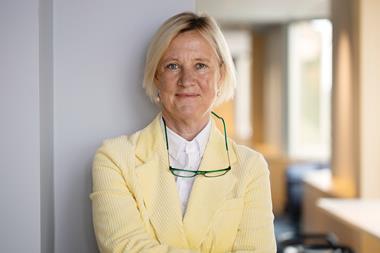This year is shaping up to be the worst for investment returns since before the great financial crisis, according to IPE’s latest performance analysis of the leading European pension funds.
The largest eight European funds by assets look set to post record poor investment returns this year, after a miserable third quarter and first-half returns of -13.6% on average – the worst in the 15-year analysis period of our study.
But this is a tale of two pension systems. For many defined benefit (DB) pension funds, asset drawdowns have been more than offset by reductions in liabilities brought about by higher interest rates. Some DB schemes, as in the Netherlands, now have sufficient financial strength to again offer beneficiaries some level of indexation.
Many trustees of defined contribution (DC) schemes, however, will be wrestling with some uncomfortable questions. Unlike DB plans, DC schemes are mostly by necessity less adventurous in their asset allocation and their members have experienced large portfolio losses.
In most cases regulation dictates a more restrictive asset allocation for DC schemes, whether through prescriptive asset allocation limits or outdated daily dealing requirements that serve to limit trustees and providers to the most liquid assets.
Aside from a few cases, such as the UK’s NEST, there has been little diversification into well-chosen private market assets, which could have helped cushion investment losses in the past year and in the longer term.
For many, the 60/40 portfolio is the bread and butter of the DC business – in some cases peppered with some real estate or other alternatives.
Indeed, this year has seen an unprecedented breakdown of the fundamental underpinning of the 60/40 concept as bonds and equities have both posted strong drawdowns. And the diversification options easily available to many DC scheme trustees, such as high yield, emerging market debt and listed property, have not provided downside protection.
The construction of many fixed income-heavy investment options for close-to-retirement beneficiaries, often labelled as ‘secure’ or ‘conservative’, has also revealed weaknesses in the design of DC strategies as they have performed even worse than ‘risky’ equity-heavy portfolios.
This resembles the experience of US target-date funds in 2008-09, when many 401(k) and other DC plan members saw huge investment losses. Then, the equity component in many funds underperformed, prompting members to sell at the wrong time.
A key lesson is that the financial theory behind pension default construction does not apply in all time periods, even if positive heavy downside correlation between equities and bonds is a rare event.
This year has further laid bare an inherent weakness in the 60/40 strategy in that it provides less upside than equities in good years and (in years like 2022) can also fail to provide downside protection.
The good news is that commentators foresee a reversion to the mean for 60/40 strategies, as higher rates allow for some upside in bond portfolios and low valuations providing good entry points for equities.
Record poor performance of supposedly safe strategies only serves to underline the fragility of funded retirement schemes, particularly where participation is voluntary and members bear all the risk.
Good system design is essential for healthy retirement investment. So is education of beneficiaries, especially at a time of squeezed real incomes, to help ensure people continue to contribute and avoid switching investment options at the wrong time.
A gold standard remains adequate minimum contribution levels and compulsion or at least auto-enrolment. For pure DC schemes there should be a rethink of default options, with greater diversification baked in to plan design.
Some element of return smoothing, as envisaged for the new Dutch DC system, may appear better for members in the short term but will not allow for better investment returns in the long run. Only robust asset allocation that takes into account members’ risk preferences and tolerances, together with good portfolio construction and diversification, can rensure better outcomes.
DB may be down but not out. If interest rates return close to their longer-term averages, we could see a revival of interest in hybrid or even traditional DB schemes. In the UK, where defined ambition schemes have cross-party support, adoption of this hybrid would foster greater confidence in pensions, where DB is almost entirely the preserve of the public sector.
Elsewhere, such as in the Netherlands or Ireland, where new DC systems are under discussion, this looks like an unfortunate time in which to ask working populations to shoulder more investment risk.
Liam Kennedy, Editor
liam.kennedy@ipe.com























No comments yet